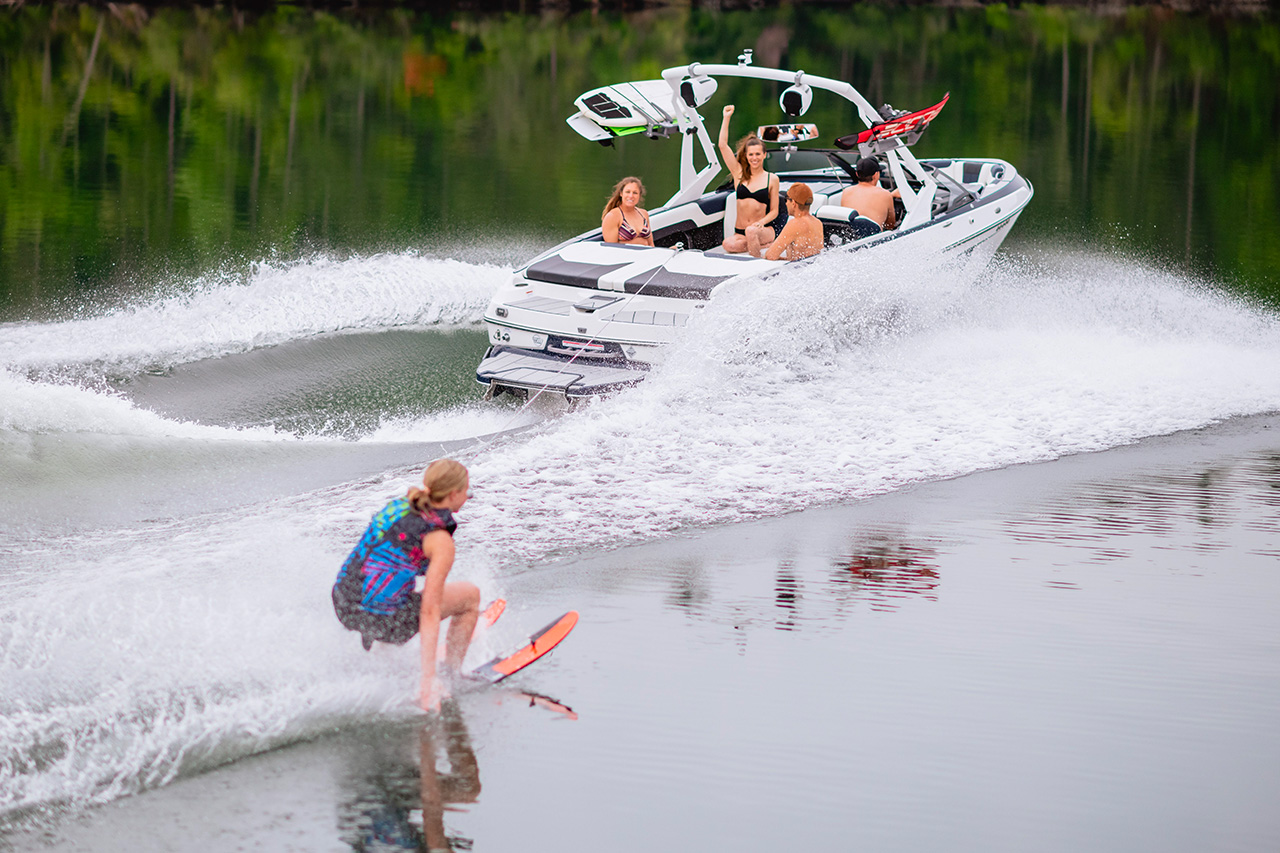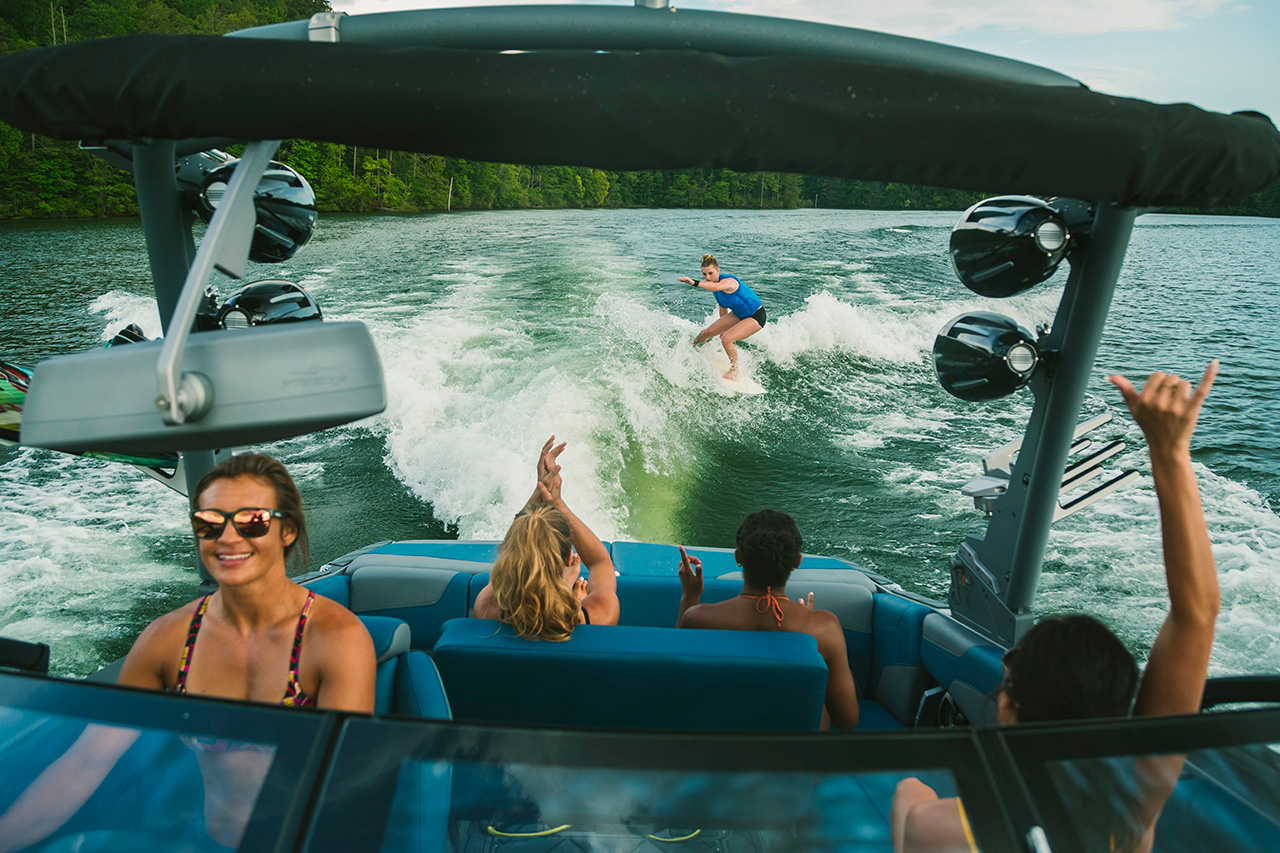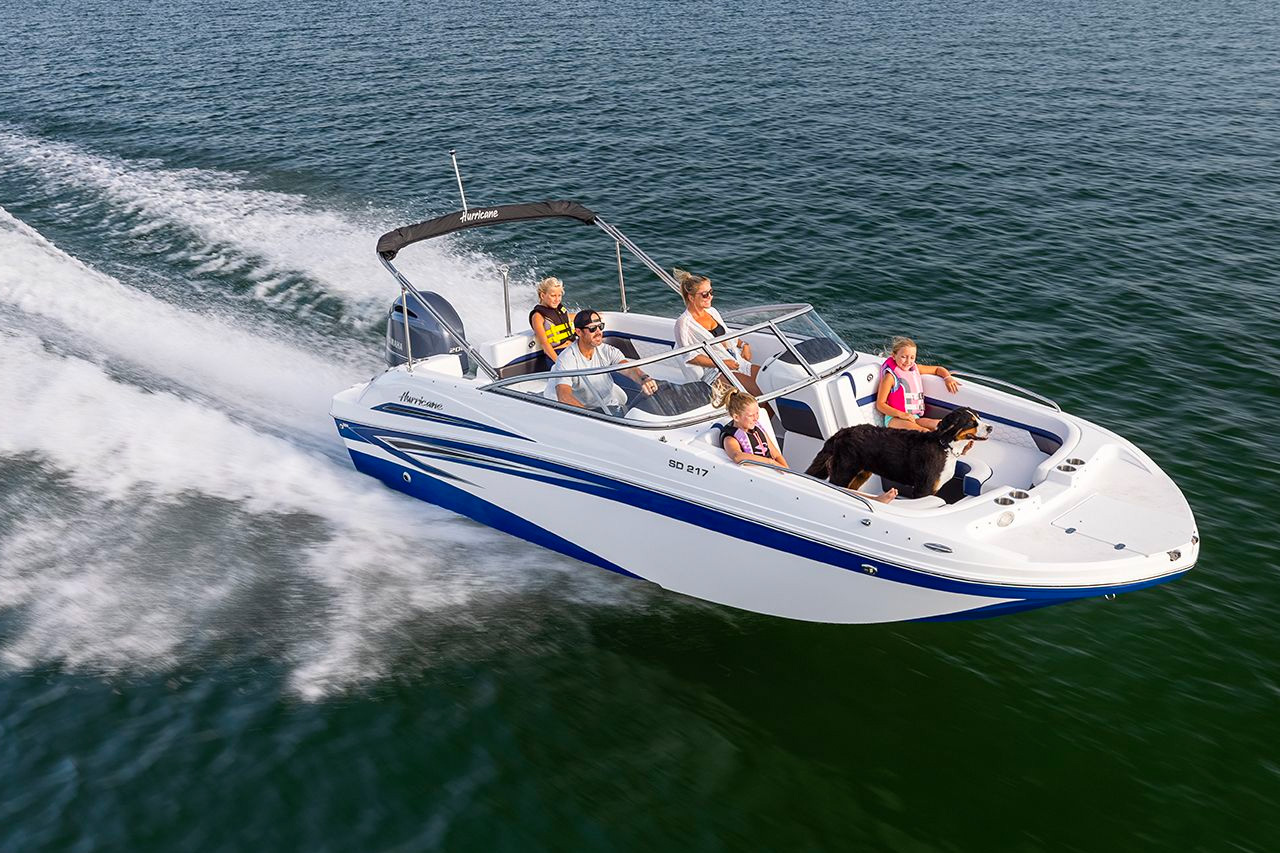Waterski, Wakeboard or Wakesurf: Which Tow Sports Boat Should You Choose?
While ski boats have been around since the 1920s, the inventions of wakeboarding, and, more recently, wakesurfing, have driven rapid innovation in the tow sports boat market. Now each sport has its own boat category. You can also get a modern crossover tow sports boat model that can handle all three… and don’t forget inflatables. Let’s walk through the different types of tow sports boats before you buy a ski & wakeboard boat. At Boats For Sale, all three boats are listed in this category to compare and contrast.

Boats for waterskiing, the OG of water sports, require fast speeds and a smooth wake to pull of their stunts and slalom racing.
Waterski Boats
Purpose: Waterski boats are designed to tow waterskiers for slalom, tricks and jumps. And they need a super-smooth runway to facilitate the moves for these activities. So ski boats are engineered to displace a minimal amount of water, sans big waves. If you’re a classic waterskier and are in the market, check out our ski & wakeboard listings right now to get started on your search.
Performance: Ski boats feature a transom deadrise, or a shallow hull angle at the rear end of the boat. Traditionally the fewer passengers in a waterski boat, the better, because weight can create a larger wake. The sweet spot size for a waterski boat is about 19 feet.
Power: Ski boats need to pull skier(s) up from a deep-water start so their engines need to start with low-end torque that’s most effectively achieved with inboard V8 engine or similar, located at the center of the boat. This keeps the weight balanced and away from the back, allowing the boat quick acceleration while producing minimal wash.
Passengers: On the downside, the center engine system causes the cockpit of a ski boat to be relatively crowded. Ski boats are ideal with fewer passengers, quite the opposite to wakeboats, which we’ll talk about next.

Wakeboarding requires slower speeds and a bunch of weight at the back of the boat to create that thick wake these adrenaline junkies crave.
Wakeboard Boats
Purpose: Wakeboats are designed to create as big and well-shaped of a wake as possible, so wakeboarders can do tricks while crossing and jumping the wake back and forth. Originally this was created by adding passengers or other cargo weight like ballast tanks to the rear of a boat. Note wakeboard boats are quite flexible as wakesurf boats, though the tow systems required are rigged differently from each other.
Performance: Wakeboard boats feature a deep V hull and a pivoting rudder for steering. Propellers are placed at the bottom of the boat to ensure safety of the wakeboarders. The most popular size for a wakeboard boat is about 21 to 24 feet. Built-in ballasts or hydrofoils are features now leveraged by wake boat manufacturers to create larger and more prominent waves to create the perfect launch ramp for wakeboarders to perform their jumps and other air tricks.
Power: Like waterski boats, a wakeboard engine has to have a gradual torque start to ensure it doesn’t jerk the wakeboarders from their starting position in the water. The engine of a wakeboard boat is positioned at the rear end of the boat. The added weight helps create the larger wake.
Passengers: Unlike the calm wash required by waterskiers, wakeboarding welcomes the weight of passengers aboard cheering them on. Wakeboard boats are also known for their high-end sound system that blasts music audible stoke the wakeboarders. Sound fun? Check out wakeboats for sale now.

While wakesurfing started behind wakeboard boats, its surge in popularity has led to surf-specific boats that shoot out perfect waves all day long.
Wakesurfing Boats
Purpose: Wakesurfing has only just become popular over the past two decades. While the main requirements of a surf boat are similar to a wakeboarding boat, manufacturers have tweaked these boats further to shape waves and cater to the accessories, speed and size ideal for wakesurfing, the most forgiving of tow sports and easiest one for everyone to learn. Browse our listings for a boat dedicated to wakesurfing.
Performance: Wakesurf boats feature a deep V hull— the more pronounced the wave can be, the easier it will be for the boat to cut through the water. The same technology that keeps evolving for wakeboats like ballast bags or compartments is leveraged on a wakesurf boat. However, you need something to control the shape of the wave, and the science is complex. So wakesurf boats employ exacting technology such as wake shaping plates that sit behind the rudder and drag, making the wave bigger and steeper, or, if desired, mellower. This and other wave shaping tools craft ideal waves with the perfect amount of push and drive.
Power: While torque efficiency is required to pull the surfer from their starting position, the ideal running speed of a wakesurf boat is only about 10 mph, much slower than the 30 or so mph that waterski boats use. But the ideal wakesurf boat is also bigger, at 25 feet. If you can tow the heavier weight and size of a 25 foot boat and it’s permitted in your waters, it makes a big difference.
Passengers: Wakesurfing rules follow similarly to wakeboarding. Plenty of room aboard for surfers and watchers. The more weight (within limits), the better, though with these heavier boats and capacity you’re going to spend more money on gas.

Crossover watersports boats can do. it all, thanks to specifically-designed versatile hulls and a variety of tech and features to change the wake at the touch of a button.
Crossovers
cPPurpose: Aware that boaters don’t always want to do one activity, and that watersports boats are expensive, coming in around 100K and up brand new, some manufacturers have set out to make boats that cross over from ski to wake to surf. In addition to the performance features listed below, these boats accommodate accessories such as tower and tow lines for multiple watersports activities.
Performance: Crossover boats achieve all tow sports capabilities because of the hull shape, which is designed especially to generate waves when assisted by a ballast at slower speeds for wakeboarding and surfing. Then, when assisted by hard reverse chines and lifting strakes for faster speeds, they can push out a flat wake totally suitable for slalom waterskiing. Additionally, crossover boats may have a feature that, when activated, helps shape the wake into surfable waves for wake surfing.
Power: In addition to a smooth acceleration from stop to start that doesn’t jerk those towed behind, these crossovers need enough power to pull the weight when the ballasts are full for wakeboarding/surfing, and to pull the boat at a faster speed for waterskiing. Most crossovers come with a variety of horsepower options.
Passengers: These boats have ample seating to accommodate as many spectators as any other watersports boat. While you might shift them to bow seating for skiing or even tubing, there is also aft seating for those who want the best view of their wakeboarders and surfers. Most boaters fall into the versatility category. If this is you, search our ski & wakeboard boat listings for a crossover.
.
